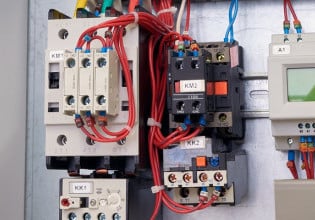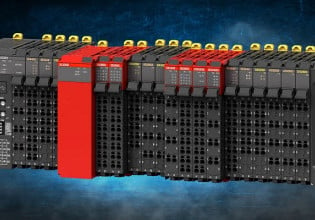Rockwell Automation Features New Hazardous Location Signaling Devices
Rockwell Automation has announced its new Allen-Bradley range of signaling devices.
When it comes to monitoring systems, it is essential that alarms are put into place to react to an emergency. However, not all alarms are the same and some environments can be far too demanding. This week, Rockwell Automation announced its new range of signaling devices from Allen-Bradley.
Alarm Systems in the Industrial Setting
While machinery and process equipment is required for the production of goods, there is far more infrastructure that is required to run an efficient production line.
One of the most important factors of any industrial system is health and safety which is where alarm systems come in. When a piece of machinery develops a fault, it is critical that it is dealt with as if left to continue could result in serious risk to life for those who are nearby.
For example, a pressurized system that goes beyond safe limits is a potential explosion and so it is important that warning systems are in place to announce evacuations if required. But alarm systems can also be used to indicate that a fault has developed in which case an engineer can quickly rectify the situation before problems arise on the production line.
However, not all commercial alarm systems can be integrated into all environments. For example, some environments may be flammable while others may have large temperature swings. Therefore, choosing an alarm system is just like choosing cabling or electronic components whereby the temperature, air, and moisture have to be considered.
New Signalling Systems from Rockwell
To meet the demands of alarm systems, Rockwell Automation has released its latest range of Allen Bradley signaling systems, the Bulletin 855X. The new range includes signal systems including beacons, horns, metal horns, and beacon/horn combinations which are designed for use in hazardous locations. Some of the important features of the new signaling systems include the following:
- Low power consumption and long life. This is important as alarm systems need to be permanently powered and operational so that in the event a warning should need to be sounded the alarm functions as expected.
- The second feature that is very important is input power capabilities which can be tricky in situations where processing equipment only offers specific power outputs. The Bulletin 855X range of signal devices is available in a wide range of power input options including 24V DC, 120V AC, and 240V AC which makes them compatible with different country mains power as well as working with pre-existing DC power sources.
- Another useful feature of the signal device range is that some applications require both a visual and audible aid which the Bulletin 855X offers. But one of the most important features of the range is their ability to operate safely in hazardous environments. So, let’s see the two main product lines and how they vary.
Bulletin 855X Suitable for Wide Range of Temperatures
This range of signaling devices is capable of operating at temperatures between -20°C and +50°C which makes it useful for a general range of temperatures found in standard environments. The construction of this range uses a glass-reinforced plastic and impact-resistant ABS enclosure and is rated at UL type 4/4X/13, IP66/67, ATEX/IEC Ex Zone 2, Zone 22, Class 1 Zone 2 and Class 1 Zone 22.

Bulletin 855XM signaling devices. Image used courtesy of Rockwell Automation.
The Bulletin 855XM range is able to operate in temperatures of -40°C to +70°C for class 1 division 2 environments and are constructed using a marine-grade aluminum enclosure with a compact footprint. The range of signaling devices are NEMA Type 4/4X/13, IP 66 certified, ATEX/IECEx, Zone 2 and Zone 22, and Class 1 Zone 2 and Class 1 Zone 22 rated.
An alarm system needs to be low power but reliable such that in the event of a failure that those nearby can be safely warned and the problem rectified. It also needs to be fit for the environment it is operating so that the longevity of the alarm can be guaranteed as well as not trigger problems in the area (such as explosions). T
The Bulletin 855X range of alarms is highly ideal for dangerous environments in industrial processes and the wide range of power options makes integrating them an easy task while their extended temperature range ensures proper function in even the hottest or coldest places.
Will you implement these signaling devices in your processes?






